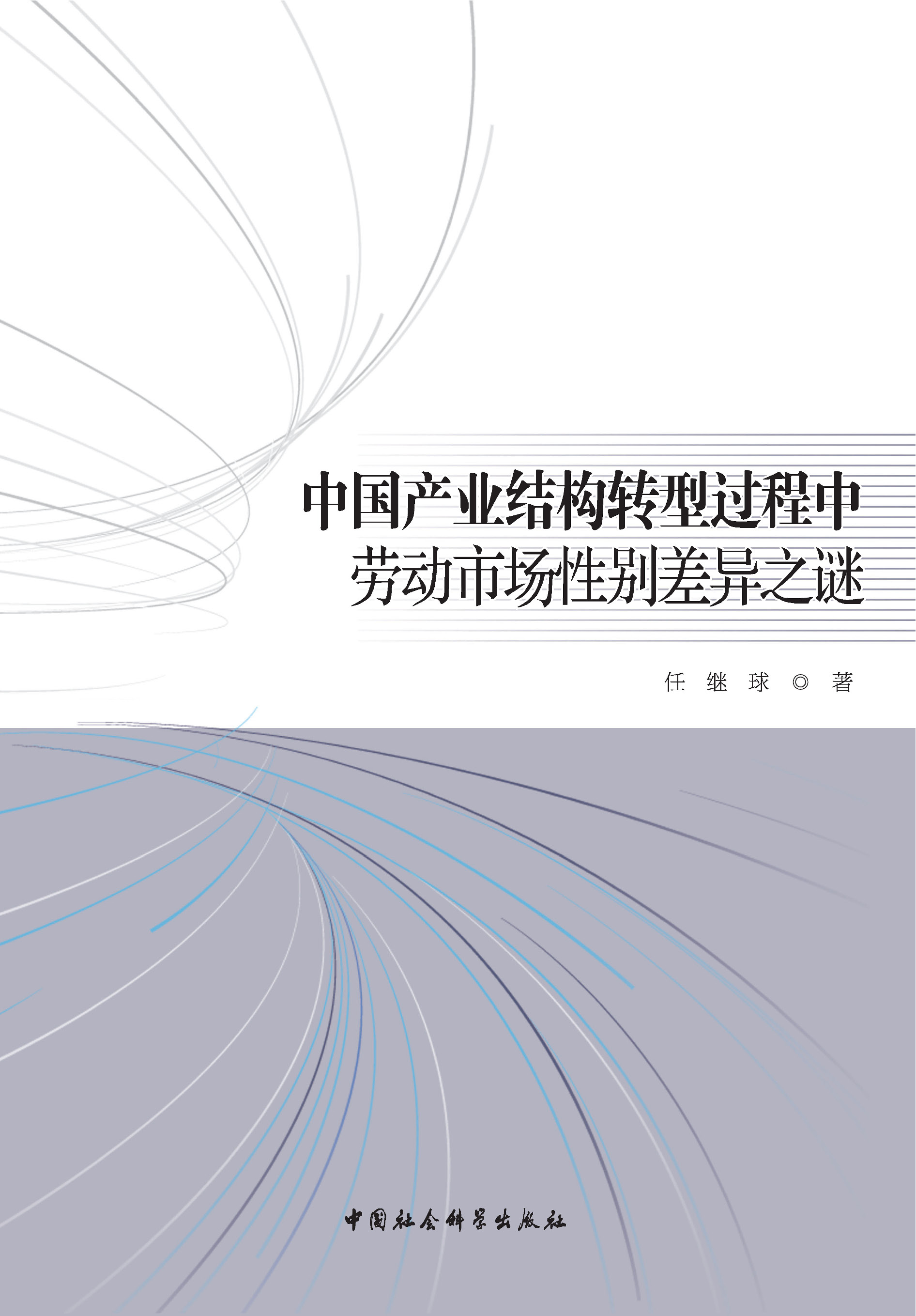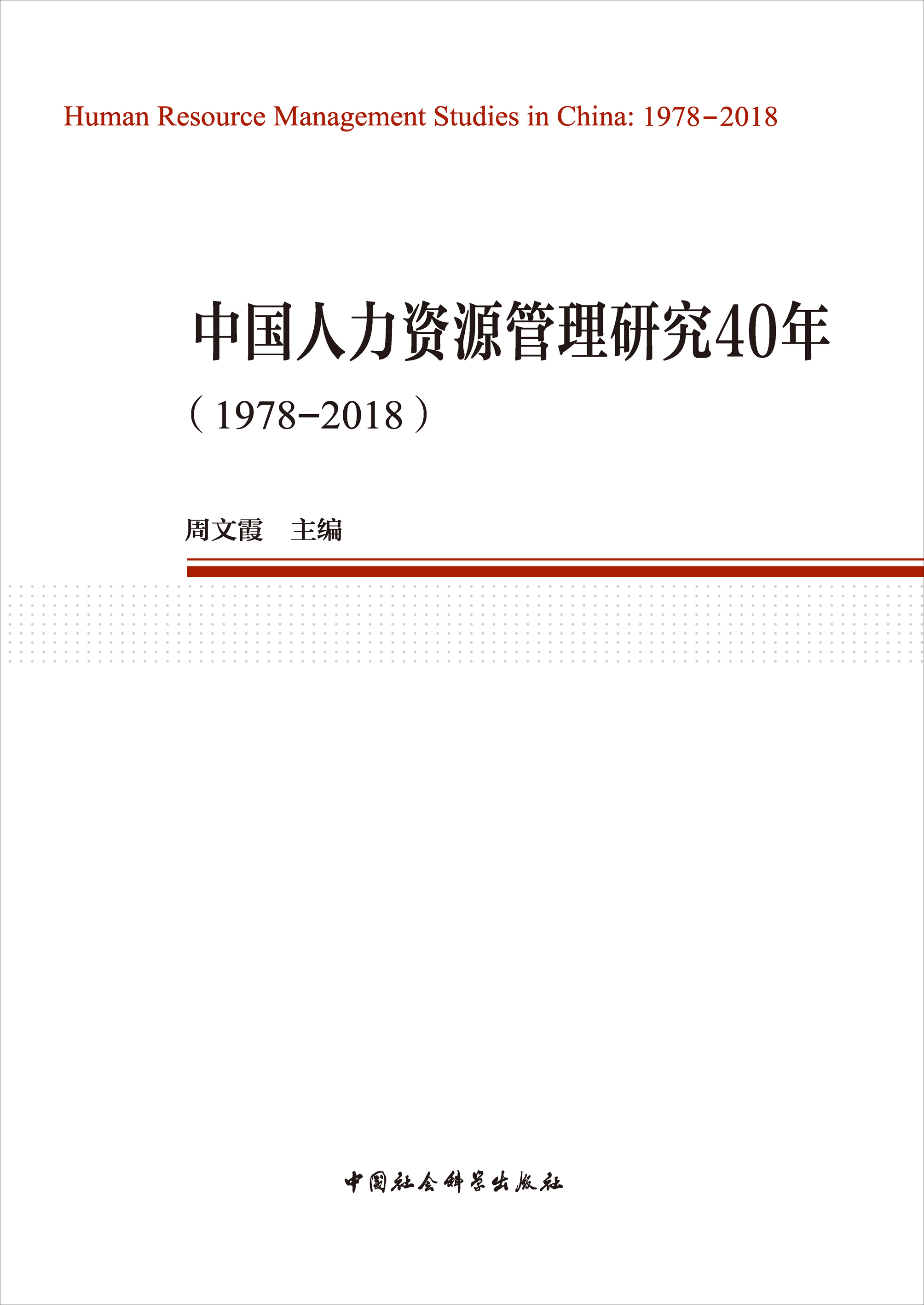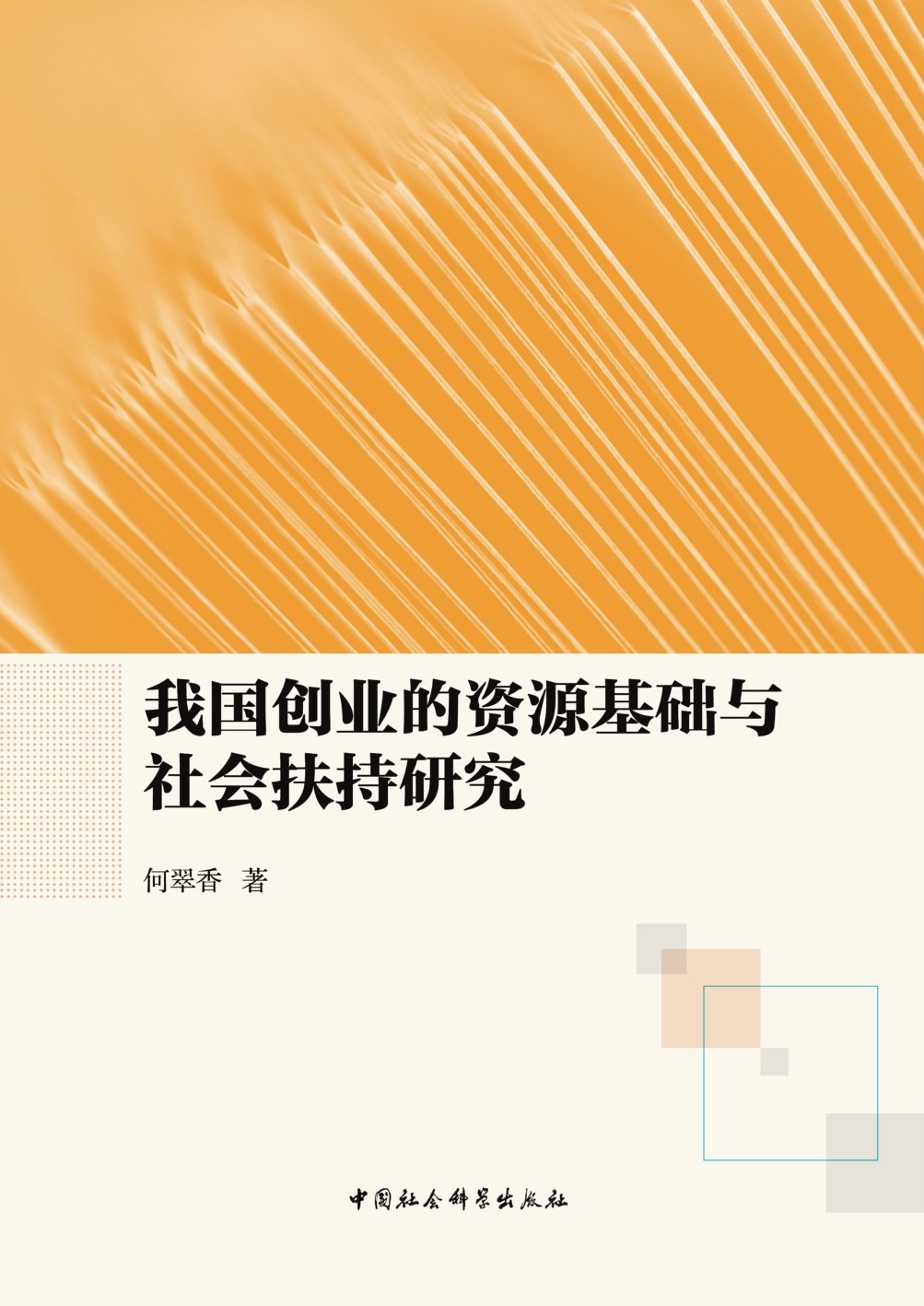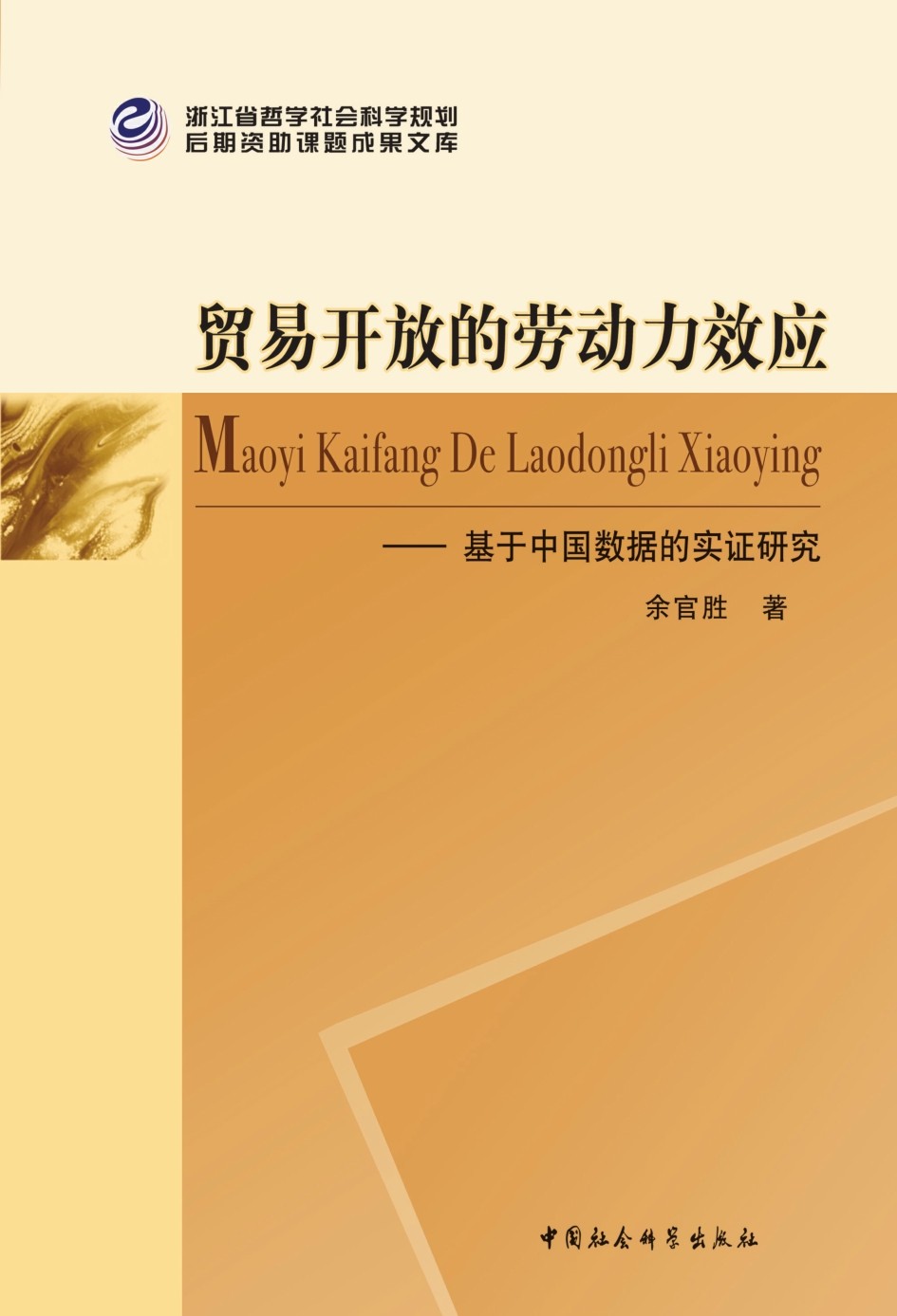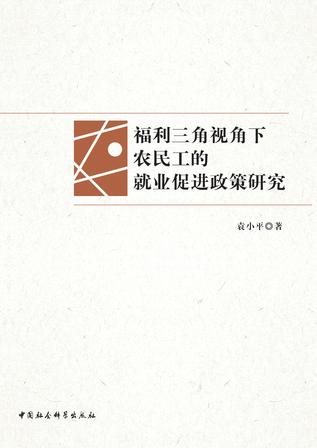内容简介
作者简介
目录
The urban-rural labor market integration is an integrant stage of development that the modernization of the economy must go through.It’s also the realistic problem that affects the stable development of our country’s economy and society in the present stage.Within the theoretical framework of institutional change,the paper combines the use of documentary,comparative static analysis,game analysis,field study and regression model analysis,etc..The author makes systematic study about the change mechanism,the course,the achievement we has been made,the problem still exists,the causes of the problem and responses strategies,and so on.Three basic concepts that the study on urban-rural labor market integration in this regard:institutional change,rural labor market segmentation,unified labor market,urban-rural labor market integration.The labor market is composed of the labor market system and the labor market mechanisms.The labor market system is guarantee of efficient and operational labor market mechanism.It is of decisive role in the labor market,and it decides the characteristics of the labor market and the labor efficiency in allocating resources.In theory,a unified labor market is perfectly competitive labor market equilibrium.But in reality,the labor market is often segmental.The labor market integration is the process of labor market from the partition to unification.In our country,the urban-rural labor market segmentation is institutional.It will decide our country’s urban and rural labor market integration which is first and foremost a process of institutional change.It includes the integration of urban and rural labor market system and resources allocation.Because of institutional change with the characteristics of path dependence,and therefore the integration of urban and rural labor market studies of the labor force must be based on the traditional system of resource allocation,with configuration pattern as the starting point.The traditional system of labor resource allocation is the labor resource planning system biased towards urban areas and isolated urban and rural areas.Formation mechanism of this system is:the classical Marxist theory of the rigid understanding and the experience of the Soviet socialist construction superstition,thus the idea that the government builds a labor resource planning system are formed.That priority are given to the development of heavy industry and resource endowments structure of the contradictions of government envisaged to enable the twist happened,eventually formed the labor resource planning system which biased towards urban areas and isolated urban and rural isolation configuration.The system consists of four parts:the urban-rural dual structure of household registration system,areas employment system completely isolated from urban and rural areas and the employment system,the equalitarianism wage system and enormous contrasts of urban and rural social security and welfare system.As a result of this system,flow of China’s rural labor force in urban and rural areas was subject to strict restrictions before the reform and opening up.Urban and rural employment structure and output structure are of a significant departure.National labor is inefficiency,the hidden unemployment is serious and the income gap between urban and rural residents is at a high level for a long time.With the deepening of reform and opening up,the level of integration of China’s urban and rural labor market continues to improve.As for as system of urban and rural labor market integration is concerned,the main achievements has been made:the reform of household registration system continued to deepen,implementation of the rural labor force between urban and rural areas at the free movement of non-residence,and the formation of four pattern employment which constitutes of rural traditional industries sections,rural non-agricultural sections,the urban informal sections and urban informal sections.In addition to the traditional rural industries,other departments have established system of self-employment,wage system of individual consultations with the nature of a typical market economy.In addition,whether in rural or urban,we have begun to set up the social security system reform in order to build the modern social security system as the goal,and have begun to implement their own system of minimum living insurance,medical insurance system,etc..However,the equal labor market system in urban and rural areas has not yet formed.In the employment system,the signing rate of labor contracts is low and the quality is not high,labor relations are unstable,the flow rate of the labor is high.There is no guarantee of the income and the erosion of wages is very serious at the rural labor market in the wage system.As to the social security system,the social security system supply for the rural traditional industries isn’t enough which leads to the insufficiency of the guarantee of the existing social security system.In rural non-agricultural sections and the urban informal sections,the government-promulgated social security system has not been effectively implemented.As to the household registration system,because of strict restrictions in large and medium-sized town,the flow of rural labor in urban and rural areas are the most of temporary transferring.Without rural citizenship,the majority of rural migrant workers in cities are excluded from the urban social security system and welfare system.In different sections,there are different reasons in the essentiality and the formation of urban-rural inequality in the labor market.For the traditional industries in the rural sections,the essence of the urban-rural inequality in the labor market system is that some of the labor market supply becomes vacant.there are three reasons:The development economics theory and the developed market economies experience made the government believe that a country in the early stages of industrialization should be biased towards the urban labor market system;The path dependent made the original labor resource allocation system of urban-rural segmentation unable to be completely eliminated;Cities and towns class have more influence upon government decision-making in our country which causes urban bias of the labor market system after reform and opening up;In non-agricultural industries sections and the urban informal sections in rural areas,the essentiality of urban-rural inequality in the labor market system is that some of the labor market system the government issued has not been effectively implemented.The reasons:The incomplete implement of the labor market system in non-agricultural industries sections and the urban informal sections in rural areas,local governments and employers’risk preference,the lack of the central government punishment to the local governments who don’t enforce the supervision the lack of local government punishment to the employers who don’t enforce the labor market system and the employers’costs of enforcing the labor market system,all of which will affect the implementation of the labor market system.As for the urban-rural labor market integration,the main achievements since the reform and opening up are:The flow scale of rural labor in urban and rural areas is expanding,the field of urban and rural labor employment continues to amalgamate,the proportion of employment of the rural labor in agriculture continues to decline and the distortion of the employment structure in urban and rural areas is smoothing down a bit.However,the phenomenon of urban-rural segmentation and urban-rural labor resources allocation is still in a very serious situation in China.Compared with the output value structure,the structure of employment in urban and rural areas still has a lot of deviations.The income gap between urban and rural residents has not been narrowed in accordance with the flow of rural labor in urban and rural areas.Flow of rural labor in urban and rural areas is of temporary transferring.China’s urban-rural segmentation of labor resource allocation system have maintained for long time because the inequality of the system in urban and rural labor market.In addition,the survey shows that urban-rural labor market integration has been affected by a number of non-institutional factors which are:the fragmentation of rural land brought about inadequate employment,the wish of the rural labor to settle in the city is not strong,migrant workers are separated,and the socialization degree of employment channels is still low,etc..The current labor resources endowments and the pattern of the allocation of urban-rural labor resources require the characteristics of goal model of China’s integral urban-rural labor market should be:keeping competitive edge in order to maintain the development of labor resources,setting up the equal employment system in order to ensure equal employment opportunities for both urban and rural residents,establishing a“wide coverage rage,low-level”social security system in order to stimulate the enthusiasm of workers in employment.We will continue to follow a proactive employment policy among the rural labor in order to promote the free flow of labors between urban and rural areas.To further promote the integration of urban and rural labor markets,we need to reform the existing system of inequality in the urban and rural labor market.In rural traditional industries sections,emphasis should be on the reform of pension insurance system,unemployment insurance system and the improvement of the level of medical care insurance system.In non-agricultural industries sections and the urban informal sections in rural areas,emphasis should be on the reform of the rural-urban labor market system that government issued.Therefore,local government must take a variety of measures to reduce the risk of employer preference,which require the central government to increase the punishment to the local governments who don’t enforce the supervision an innovate employment system to reduce the employers’costs by enforcing the equal employment system on the urban and rural residents.Local governments should increase punishment upon employers who don’t implement and improve rural labors’organizing degree to increase their influence upon the modification of employments system.As far as the household registration system is concerned,the key of the reform is to eliminate the discrimination in the urban household registration.Given the established system in the labor market,the expansion of the flow of the rural labor force in urban and rural areas can further promote China’s urban and rural labor market integration.The current non-institutional measure to increase the flow of rural labor force in urban and rural areas are:the concentration of arable land in rural areas to ensure full employment of rural labor force in rural traditional industries sections,the creation of opportunities for the migration of rural labor family,the improvement of the degree of socialization for the employment of rural labor and the reduction of the cost of living in cities and towns in order to increase their willingness to enter the urban life,etc..Keywords:institutional change;labor market segmentation;unified labor market;Urban-rural labor market integration
全部显示∨
中文摘要
Abstract
第一章 导论第一节 研究的必要性、目标及意义
第二节 国内外相关研究述评一 劳动力市场一体化的含义及其发展规律
二 我国城乡劳动力市场一体化的特征
三 我国城乡劳动力市场一体化的进展
四 我国城乡劳动力市场一体化水平不高的原因及应对措施
五 亟待进一步研究的问题
第三节 研究思路、方法与本书结构一 研究思路
二 研究方法
三 本书结构
第二章 城乡劳动力市场一体化的理论基础:概念与原理第一节 劳动力市场一 劳动力市场的含义及要素构成
二 劳动力市场机制的含义、形成条件及局限性
三 劳动力市场制度的含义、要素构成及与劳动力市场机制的关系
第二节 劳动力市场一体化一 统一劳动力市场的含义与现实意义
二 劳动力市场分割的含义、分类及理论述评
三 劳动力市场一体化的含义与内容
第三节 我国的城乡劳动力市场一体化一 我国的农村劳动力市场与城镇劳动力市场
二 我国城乡劳动力市场分割的独特性
三 我国城乡劳动力市场一体化的内容
第四节 我国城乡劳动力市场一体化研究的理论框架一 传统的城乡劳动力市场一体化模型不完全适合分析我国的问题
二 我国城乡劳动力市场一体化研究的理论框架
第五节 小结
第三章 城乡劳动力市场一体化的历史起点:传统的劳动力资源配置制度与配置格局第一节 传统劳动力资源配置制度的形成机制一 传统劳动力资源配置制度形成机制研究述评
二 我国传统劳动力资源配置制度形成的根源
三 劳动力资源计划配置制度设想扭曲的原因
第二节 传统的劳动力资源配置制度一 传统的城乡二元户籍制度
二 城乡传统的就业制度及其比较
三 城乡传统的工资制度及其比较
四 城乡传统的社会保障制度及其比较
五 传统劳动力资源配置制度的城乡分割
第三节 传统的劳动力资源配置机制与改革开放前的劳动力资源配置格局一 传统的劳动力资源配置机制
二 改革开放前的城乡劳动力资源配置格局
第四节 小结
第四章 城乡劳动力市场制度一体化变迁:机制、过程与结果第一节 城乡劳动力市场制度一体化变迁的路径和机制一 城乡劳动力市场制度一体化变迁的路径
二 城乡劳动力市场制度一体化变迁的机制
第二节 城乡劳动力市场的就业制度一体化变迁一 农村劳动力市场的就业制度变迁过程
二 城镇劳动力市场的就业制度变迁过程
三 当前城乡劳动力市场的就业制度比较
第三节 城乡劳动力市场的工资制度一体化变迁一 农村劳动力市场的工资制度变迁过程
二 城镇劳动力市场的工资制度变迁过程
三 当前城乡劳动力市场的工资制度比较
第四节 城乡劳动力市场的社会保障制度一体化变迁一 农村劳动力市场的社会保障制度变迁过程
二 城镇劳动力市场的社会保障制度变迁过程
三 当前城乡劳动力市场的社会保障制度比较
第五节 户籍制度的变迁一 户籍制度变迁的过程
二 户籍制度变迁对城乡劳动力市场制度一体化的影响
第六节 小结
第五章 城乡劳动力市场制度一体化变迁:城乡不平等劳动力市场制度成因与机理第一节 城乡不平等劳动力市场制度的成因一 农村传统部门不平等劳动力市场制度的成因
二 农村非农产业部门、城镇非正规部门不平等劳动力市场制度的成因
第二节 农村非农产业部门、城镇非正规部门劳动力市场制度规定落实的博弈机理一 地方政府与用人单位的行为分析
二 地方政府与用人单位的博弈模型
三 农村非农产业部门、城镇非正规部门落实劳动力市场制度规定的制约因素
第三节 小结
第六章 城乡劳动力资源配置一体化变迁:过程、配置格局与影响因素第一节 城乡劳动力资源配置一体化变迁的过程一 城乡劳动力资源配置一体化的评价标准
二 我国农村劳动力城乡流动的变迁
三 我国城乡居民收入差距的变迁
第二节 当前我国城乡劳动力资源配置的格局一 我国城乡劳动力资源配置一体化的进展
二 我国城乡劳动力资源配置一体化仍然存在的问题
第三节 现行劳动力市场制度对城乡劳动力资源配置一体化的影响一 当前我国城乡劳动力资源配置的机制
二 现行劳动力市场制度与城乡就业结构扭曲
三 现行劳动力市场制度与农村劳动力城乡流动暂时性
四 现行劳动力市场制度与“流动与收入差距同时扩大悖论”
第四节 劳动力市场制度外因素对农村劳动力城乡流动的影响一 农村劳动力城乡流动影响因素的理论分析
二 农村劳动力城乡流动影响因素的实证分析
第五节 小结
第七章 进一步推进城乡劳动力市场一体化变迁:目标模式与政策建议第一节 城乡统一劳动力市场的目标模式一 城乡统一劳动力市场目标模式选择的着眼点
二 我国的城乡劳动力资源禀赋及其配置的公平与效率
三 我国城乡统一劳动力市场目标模式的选择
第二节 政策建议(上):进行劳动力市场制度改革,促进城乡劳动力市场一体化一 农村传统部门建立健全劳动力市场制度
二 农村非农产业部门、城镇非正规部门充分落实已颁行的劳动力市场制度规定
三 改革户籍制度以实现农村劳动力在城乡间的自由流动
第三节 政策建议(下):实施配套制度改革,促进城乡劳动力市场一体化一 农村耕地适度集中
二 为农村劳动力举家迁往城镇创造条件
三 提高农村劳动力城镇就业渠道的社会化程度
四 提高农村劳动力城镇定居意愿
第四节 小结
参考文献
致谢
该书无电子版哦,想阅读点购买纸书吧,现在还在打折喔(⊙o⊙)


